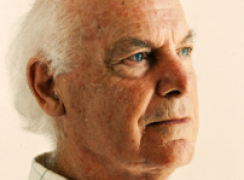The Future of Neurotheology
In my latest book, Principles of Neurotheology, I try to espouse a set of principles that might help guide the neurological study of religious and spiritual experiences moving forward. The goal is to address the philosophical, theological, and scientific issues related to this field. The question is, what will the future of neurotheology look like? What might neurotheology accomplish in the next five, 10, or even 50 years?
Neurotheology is still very early in its development. Truly combining neuroscience with religious and spiritual phenomena was only possible with the advent of modern brain imaging techniques. Before the development of these techniques, the rudiments of neurotheology were developed based primarily on animal models and speculation. Today, we have begun to uncover substantial information regarding the relationship between the human brain and religious and spiritual practices and experiences
In the next five years, neurotheology will likely continue to advance our understanding of how the brain is associated with religious and spiritual phenomena. Most likely, the brain imaging studies that have become an important aspect of neurotheology will continue to expand. There are many types of practices and experiences that remain to be evaluated using brain imaging techniques. Traditions might be compared, as well as the wide variety of practices within each tradition. Imaging studies, along with other clinical studies, will help us better understand not only what happens in the brain at the time of a particular practice, such as meditation or prayer, but also how such practices affect us over time. Already, we understand that practices like meditation and prayer can lower anxiety and depression, and even help the brain remember better. Such improvements are associated with long-term changes in the brain’s function. Thus, religion, spirituality, and God all can change your brain.
In addition to what we know about general brain function, future studies in the next five to 10 years will hopefully evaluate how a variety of neurotransmitter systems relate to religious and spiritual phenomena. Several early studies suggest that both dopamine and gamma-aminobutyric acid (GABA) are associated with practices like meditation. This is interesting since dopamine is associated with the reward system, movement, and memory. GABA is the primary inhibitory neurotransmitter, perhaps related to blissful experiences, that helps shut the mind down. But other neurotransmitters may be involved in complex interactions during religious and spiritual practices.
It may be that in the next 10 years, we can begin working toward what might be called a “religionome.” In this context, a religionome would be an attempt at cataloguing every different type of religious and spiritual practice and experience across all people, cultures, and traditions. This would integrate both subjective experiences, doctrinal and theological concepts, health-related components, and physiology in an overall evaluation of how human beings are religious and spiritual. This would also require an understanding of the differences between those who are religious or spiritual and those who are atheist or agnostic. In addition, neurotheology must help us try to understand when religious and spiritual beliefs turn negative, leading to hatred, violence, and terrorism.
In the far future, neurotheology could open up some fascinating possibilities. Since practices like meditation result in altered states of consciousness, neurotheology may help us understand the nature of consciousness and how it relates to the material world. Perhaps we might better understand how our consciousness affects ourselves and the world around us. Neurotheology may help us fully realize our religious or spiritual potential, finding the most effective ways of optimizing this part of ourselves and hopefully contributing to a more compassionate and understanding period of human existence. And it has always been my hope that a neurotheological approach might yield answers to some of the greatest questions in human history: Why are we here? Why is there something rather than nothing? What is the true nature of reality?
While these questions may seem impossible to address, I would argue that the best attempt requires an approach that integrates the best we can derive from science and the best we can derive from religious, spiritual, and philosophical pursuits. Will neurotheology lead humanity toward a new enlightenment? Only time will tell.
The above is from 

No comments:
Post a Comment